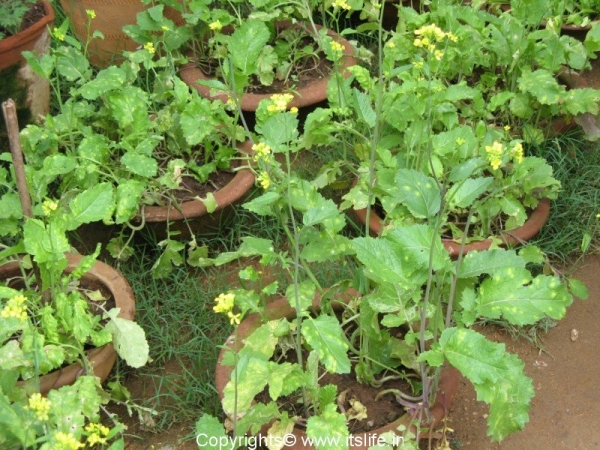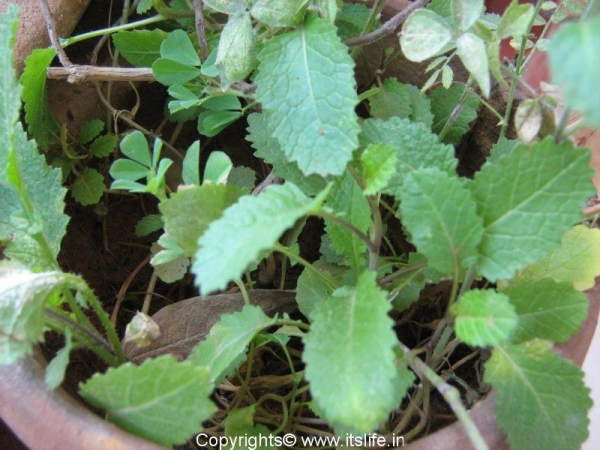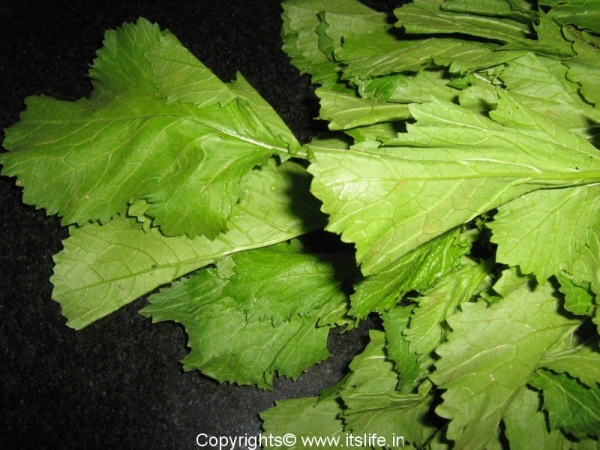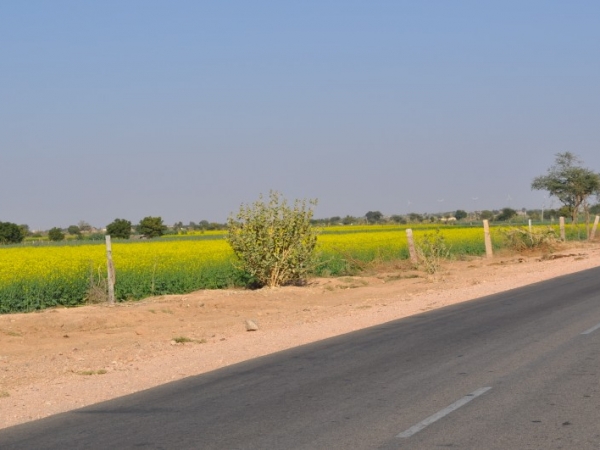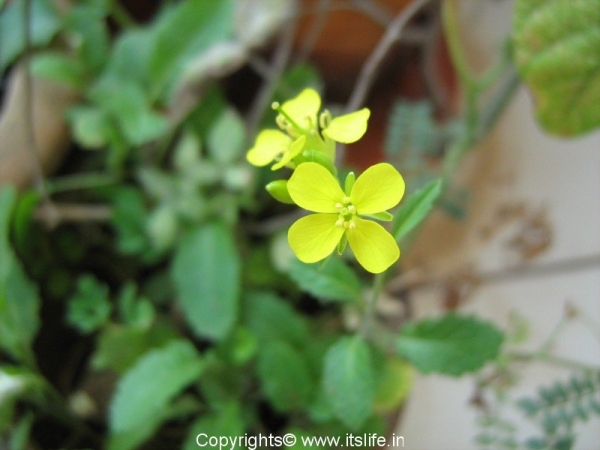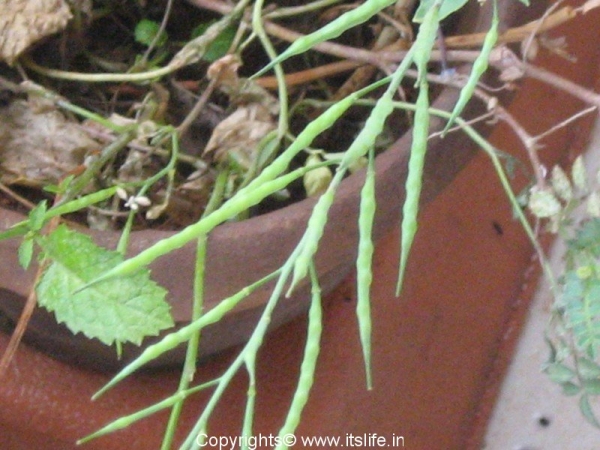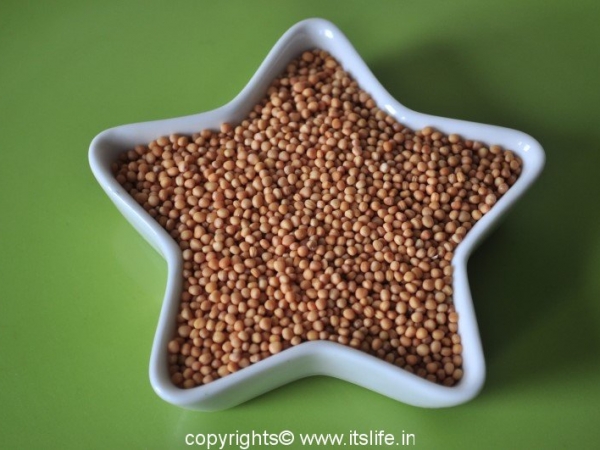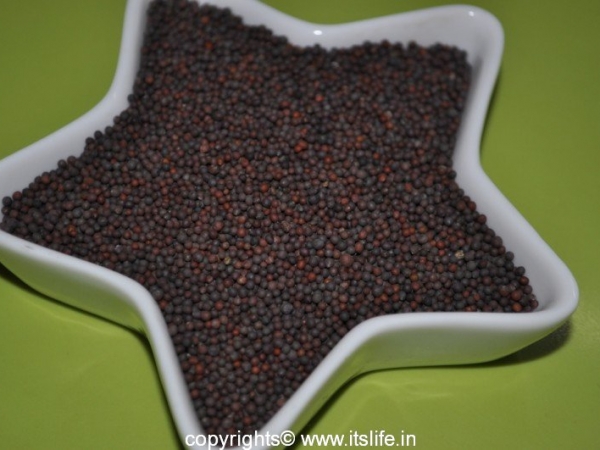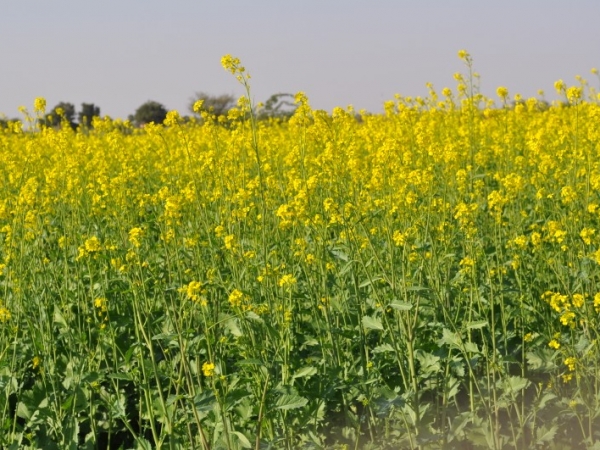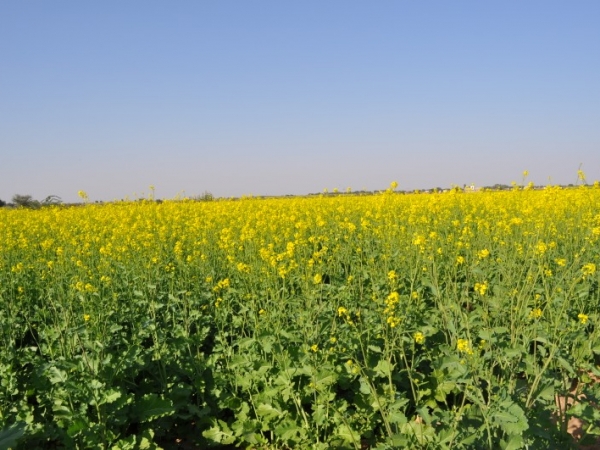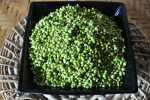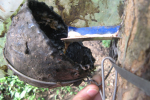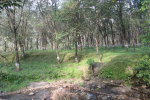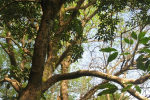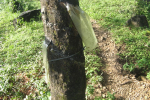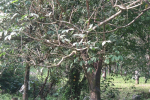In Indian cuisine, the first spice that is added while preparing a dish to heated Oil is the Mustard Seeds. It is only when they pop that the other ingredients follow one by one.
Asia and Europe are the continents where Mustard was grown from a very long time. In India it is known as Sasve in Kannada, Sarson in Hindi, Hangam in Maipuri, and Kadugu in Tamil. The botanical name is Brassica Junce and belongs to Brassicaceae.
The plants grow to a height of 3 feet with thin green leaves.
The leaves are used to prepare the famous Punjabi dish “Sarson Ki Saag”.
You will find beautiful fields of Mustard in Punjab, Haryana, and Rajasthan.
Flowers are small and bright yellow. They bloom in bunches at the tip of the branches.
Seeds are encapsulated in a sickle shaped pod.
The seeds are black or yellow.
Mustard Seeds are used extensively in Indian Cuisine and the Mustard Oil extracted from the seeds is used in Rajasthani, Punjabi, and Haryanvi Cuisine.
The sharp, hot, pungent flavor blends very well with Indian cuisine. It is also served as a table condiment in the western countries.
White, Oriental, Indian, and Black Mustard are the different varieties of Mustard grown.
Medicinal uses:
As Mustard has antibacterial properties, it is used in traditional medicine to treat minor ailments.
Recipes:
Sarson Ka Saag
Kayi Sasve Chitranna
Hannina Kayi Sasve
